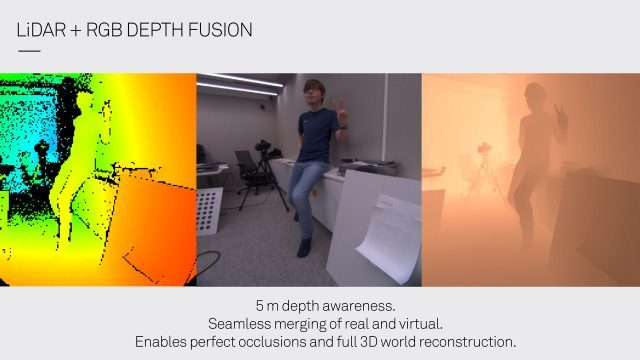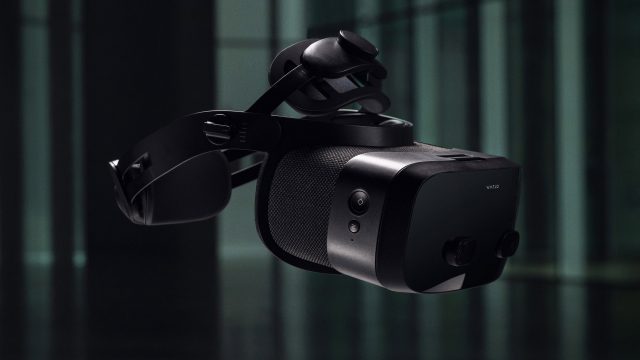XR-3 is Built for High-quality Mixed Reality, Now With Inside-out Tracking

While Varjo’s VR-3 headset is purely aimed at VR use-cases and implements SteamVR Tracking, the XR-3 is specially designed for mixed reality applications and uses new inside-out tracking tech that the company says it has developed in-house.
Varjo has loaded the XR-3 with high-quality pass-through cameras and sensors that allow the headset to expose the world outside of the headset to high-quality, wide-field of view augmentation with full opacity control (something transparent AR headsets can’t do).

While you arguably call Oculus Quest an MR headset thanks to its passthrough capabilities, the world you see through the headset is grainy and black and white. With XR-3, Varjo has gone to great lengths to make the headset’s passthrough fidelity match its incredible resolution.
As a cheeky (but effective) demo, the company shows how a user wearing XR-3 is able to easily thread a needle—something you’d have an awfully hard time doing with Oculus Quest.
Beyond the high-quality pass-through cameras, XR-3 also includes a LiDAR scanner for depth detection, which allows for more accurate augmented reality and convincing occlusion of virtual objects by the real world. The company says it’s fusing both the LiDAR and RGB pass-through camera to achieve a depth-map that’s accurate out to 5 meters.

Varjo Calls Prosumer Space “interesting”, But Remains Focused on Enterprise

Given that Varjo’s high-end enterprise headsets have the kind of features and performance that everyone in the VR space would love to see in consumer-focused products, the executives at the company have become accustomed to me asking if they’re thinking about the consumer space.
The answer is still pretty much “no.” For the most part the company is laser-focused on making the best professional headsets on the market. But as prices continue to decrease, this time Varjo’s execs told me they find the ‘prosumer’ market “interesting.”
Modern VR headsets haven’t really been around long enough for ‘consumer’ and ‘prosumer’ price segments to solidify, but personally I tend to think of ‘consumer’ headsets being in the sub-$1,000 range, while ‘prosumer’ headsets would fall in the $1,000–$2,000 range.
Varjo’s VR-3—which uses SteamVR Tracking and already natively supports SteamVR content—is still well outside of even the prosumer range at $3,200 (plus 800 annually), but it’s starting to get within striking distance. Interesting indeed.






